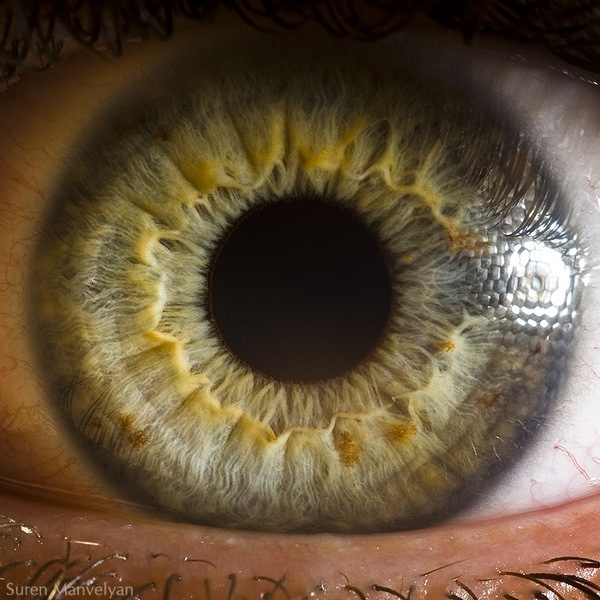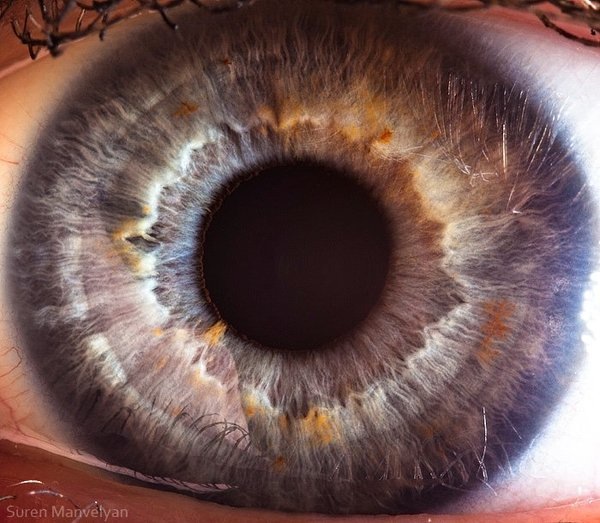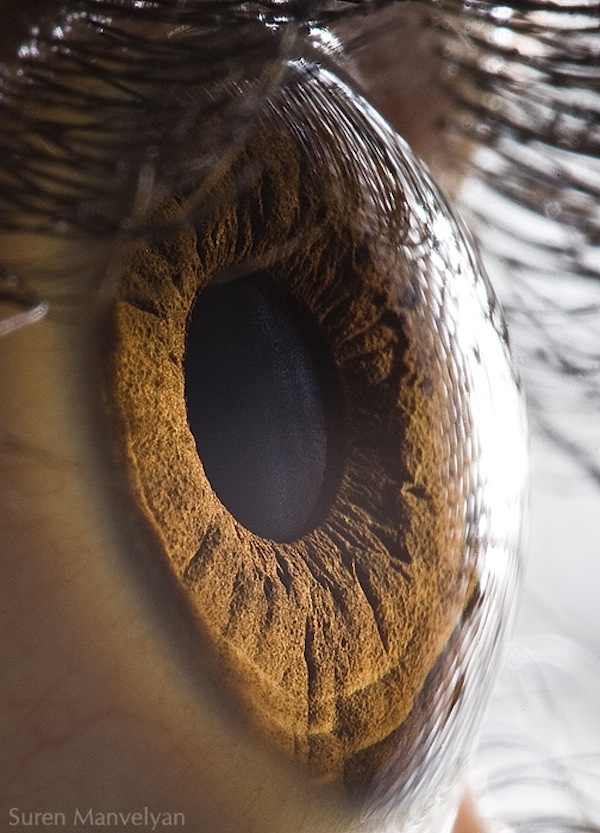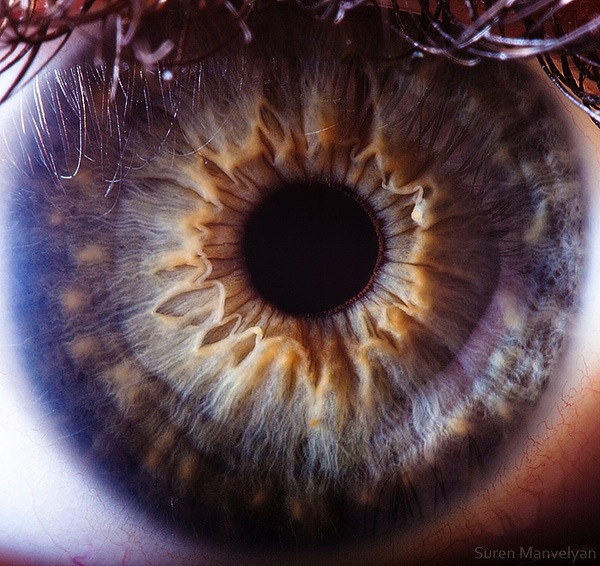The Science Behind These Amazing Photographs of the Human Eye
What makes our eye look like a desert landscape?
You might have seen these amazing images from photographer Suren Manvelyan before. They’re super-closeups of the human eye, revealing the beautiful complexity of our iris. But what are we actually seeing? What makes our eye look like a desert landscape?
The iris has two layers of fibers—radial fibers and sphincter fibers. Radial fibers are what pulls the pupil open, and sphincter fibers are what cause the pupil to close. Most muscles in our body are sheathed in some sort of membranous covering, but these fibers are open to the fluid in the front of the eye called the aqueous humor, which is why we can see them very distinctly in these images. The valleys and creases that surround the pupil are where the iris buckles when the pupil dilates.
With that, here are some more amazing images from Manvelyan.

Interestingly, certain drugs can cause eye color to change, but no one has yet been able to figure out how to change brown eyes into blue ones.
More from Smithsonian.com:
What Meets The Eye May Not Actually Be An Eye
‘Eye Cells’ Hone in on Eye Contact, Create Special Connections with Others
/https://tf-cmsv2-smithsonianmag-media.s3.amazonaws.com/accounts/headshot/Rose-Eveleth-240.jpg)







/https://tf-cmsv2-smithsonianmag-media.s3.amazonaws.com/accounts/headshot/Rose-Eveleth-240.jpg)